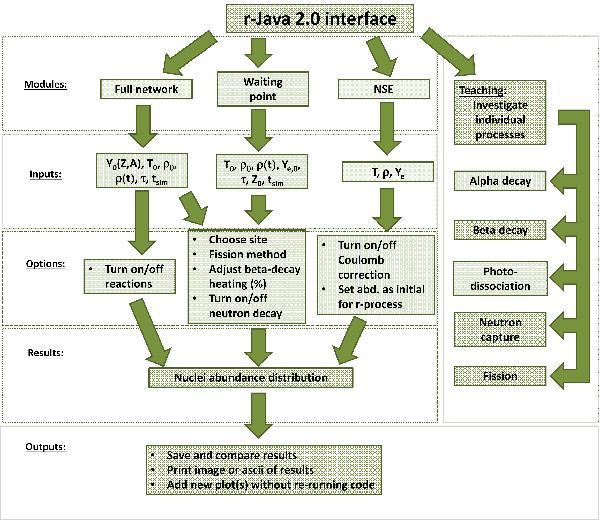The r-Java 2.0 code: nuclear physics
Abstract
Aims: We present r-Java 2.0, a nucleosynthesis code for open use that performs r-process calculations, along with a suite of other analysis tools.
Methods: Equipped with a straightforward graphical user interface, r-Java 2.0 is capable of simulating nuclear statistical equilibrium (NSE), calculating r-process abundances for a wide range of input parameters and astrophysical environments, computing the mass fragmentation from neutron-induced fission and studying individual nucleosynthesis processes.
Results: In this paper we discuss enhancements to this version of r-Java, especially the ability to solve the full reaction network. The sophisticated fission methodology incorporated in r-Java 2.0 that includes three fission channels (beta-delayed, neutron-induced, and spontaneous fission), along with computation of the mass fragmentation, is compared to the upper limit on mass fission approximation. The effects of including beta-delayed neutron emission on r-process yield is studied. The role of Coulomb interactions in NSE abundances is shown to be significant, supporting previous findings. A comparative analysis was undertaken during the development of r-Java 2.0 whereby we reproduced the results found in the literature from three other r-process codes. This code is capable of simulating the physical environment of the high-entropy wind around a proto-neutron star, the ejecta from a neutron star merger, or the relativistic ejecta from a quark nova. Likewise the users of r-Java 2.0 are given the freedom to define a custom environment. This software provides a platform for comparing proposed r-process sites.
- Publication:
-
Astronomy and Astrophysics
- Pub Date:
- August 2014
- DOI:
- 10.1051/0004-6361/201322887
- arXiv:
- arXiv:1402.3823
- Bibcode:
- 2014A&A...568A..97K
- Keywords:
-
- nuclear reactions;
- nucleosynthesis;
- abundances;
- Astrophysics - Instrumentation and Methods for Astrophysics;
- Astrophysics - Solar and Stellar Astrophysics;
- High Energy Physics - Phenomenology;
- Nuclear Theory
- E-Print:
- 26 pages, 18 figures, 1 table
